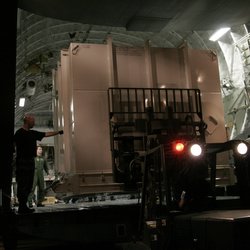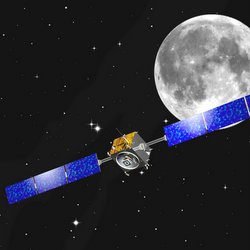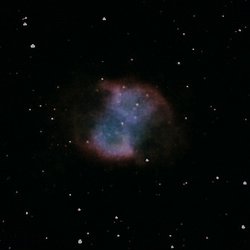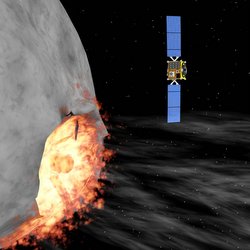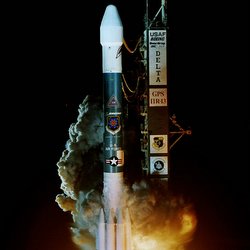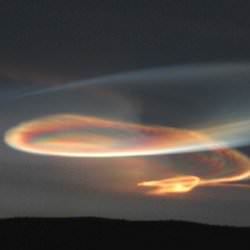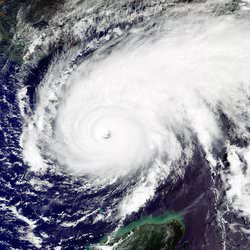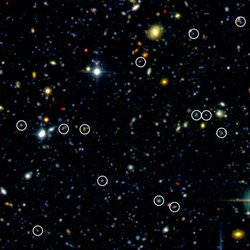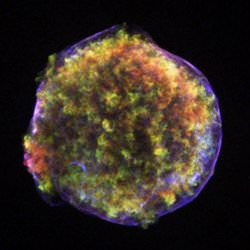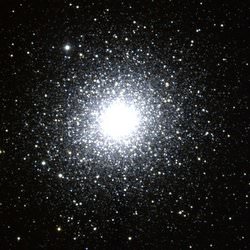
M2. Image credit: Doug Williams/REU Program NOAO/AURA/NSF. Click to enlarge.
Monday, September 26 – Tonight our journey might seem like a simple one, but the rewards are great. First you must start by identifying bright Beta Aquarii about a fist’s width above the northeastern most corner star of Capricornus. Continue northward about another five degrees, because I’m going to introduce you to the M2.
First seen by Maraldi in 1746 and later cataloged by Messier in 1760, the M2 is easily seen in both binoculars and small telescopes. The awesome globular cluster is around 50,000 light years away, putting it far more distant than the M13, and it’s positioned in the general direction of our own galaxy’s southern pole. Containing at very least 100,000 stars, including red and yellow giants, even small optics will immediately pick up on the M2’s strong, bright core and larger scopes will resolve out an impressive amount of the fainter members. It’s a good one!
Tuesday, September 27 – Tonight’s destination is not an easy one, but if you have a 6″ or larger scope, you’ll fall in love a first sight! Let’s head for Eta Pegasi and slightly more than 4 degrees north/northeast for the NGC 7331.
This beautiful, 10th magnitude, tilted spiral galaxy is very much how our own Milky Way would appear if we could travel 50 million light years away and look back. Very similar in both structure to ourselves and the “Great Andromeda”, this particular galaxy gains more and more interest as scope size increases – yet it can be spotted with larger binoculars. At around 8″ in aperture, a bright core appears and the beginnings of wispy arms. In the 10″ to 12″ range, spiral patterns begin to emerge and with good seeing conditions, you can see “patchiness” in structure as nebulous areas are revealed and the western half is deeply outlined with a dark dustlane. But hang on… Because the best is yet to come!
Wednesday, September 28 – Tonight return to the NGC 7331 with all the aperture you have. What we are about to look at is truly a challenge and requires dark skies, optimal position and excellent conditions. Now breathe the scope about one half a degree south/southwest and behold one of the most famous galaxy clusters in the night.
In 1877, French astronomer – Edouard Stephan was using the first telescope designed with a reflection coated mirror when he discovered something a bit more with the NGC 7331. He found a group of nearby galaxies! This faint gathering of five is better known as “Stephan’s Quintet” and its members are no further apart than our own Milky Way galaxy.
Visually in a large scope, these members are all rather faint, but their proximity is what makes them such a curiosity. The Quintet is made up of five galaxies numbered NGC 7317, 7318, 7318A, 7318B, 7319 and the largest is 7320. Even with a 12.5″ telescope, this author has never seen them as much more than tiny, barely there objects that look like ghosts of rice grains on a dinner plate. So why bother?
What our backyard equipment can never reveal is what else exists within this area – more than 100 star clusters and several dwarf galaxies. Some 100 million years ago, the galaxies collided and left long streamers of their materials which created star forming regions of their own, and this tidal pull keeps them connected. The stars within the galaxies themselves are nearly a billion years old, but between them lay much younger ones. Although we cannot see them, you can make out the soft sheen of the galactic nucleii of our interacting group.
Enjoy their faint mystery!
Thursday, September 29 – Tonight let’s relax a little bit and have a look at a superb open cluster that stays superb no matter if you use small binoculars or a big telescope. Of whom do I speak so highly? M34…
Easily found on Perseus west border by scanning between Beta Perseii (Algol) and Gamma Andromeda (Almach), the M34 was discovered by Messier in 1764. Containing around 80 members, the central knot of stars is what truly makes it beautiful. At around 1400 light years away, this stellar collection is believed to be around 10 million years old. While binocular users are going to be very happy with this object, scopists are going to appreciate the fact that there is a double right in the heart of M34. This fixed pair is around magnitude 8 and separated by about 20″.
Friday, September 30 – Today in 1880, Henry Draper must have been up very early indeed when he took the first photo of the Great Orion Nebula (M42). Although you might not wish to set up equipment before dawn, you can still use a pair of binoculars to view this awesome nebula! You’ll find Orion high in the southeast for the Northern Hemisphere, and the M42 in the center of the “sword” that hangs below its bright “belt” of three stars.
While you’re out, take advantage of some very beautiful sky scenery. To the west, Mars dominates the sky as the brightest object and the Pleiades so nearby doubles the pleasure. More? Then look east and catch Saturn’s act and it still remains very close to the “Beehive”. All of these can be see with the unaided eye and make getting up early a pleasure!
Saturday, October 1 – In 1897, the world’s largest refractor (40″) debuted at the dedication of the University of Chicago’s Yerkes Observatory. Also today in 1958, NASA established by an act of Congress. More? In 1962, the 300-foot radio telescope of the National Radio Astronomy Observatory (NRAO) went live at Green Bank, West Virginia. It held its place as the world’s second largest radio scope until it collapsed in 1988.
One this universal date, viewers in Alaska will have the opportunity to watch the very last of the Moon occult Sigma Leonis. Be sure to check this IOTA webpage for times and locations.
For those of you who have waited on the weekend to enjoy dark skies, then let’s add another awesome galaxy to the collection. Tonight set your sights towards Alpha Pegasi and drop due south less than 5 degrees to pick up NGC 7479.
Discovered by William Herschel in 1784. this tantalizing 11 magnitude barred spiral galaxy has had a supernova in its nucleus as recently as 1990. While the 16th magnitude event is no longer visible, smaller telescopes will easily pick out bright core and elongation of the central bar. Larger aperture will find this one a real treat as the spiral arms curl both over and under the central structure, resembling a ballet dancer “en pointe”.
Congratulations! You’ve just observed Caldwell 44.
Sunday, October 2 – Do I always save the best for last? You bet. And tonight it’s my favourite galaxy structure – edge-on.
The NGC 7814 is easy enough to find. Just head towards Gamma Pegasi and look in your finderscope for a star that is around 3 degrees to the northwest. At low power you will see the galaxy to the southeast of this star as a scratch of light. Up the power in both aperture and magnification and enjoy! This galaxy has a deeply concentrated nucleus and a very prominent dissecting dark dustlane.
By the way… It’s Caldwell 43. 😉
Here’s hoping that all of you have clear, dark skies! Until next week? May all your journeys be at light speed…. ~Tammy Plotner
